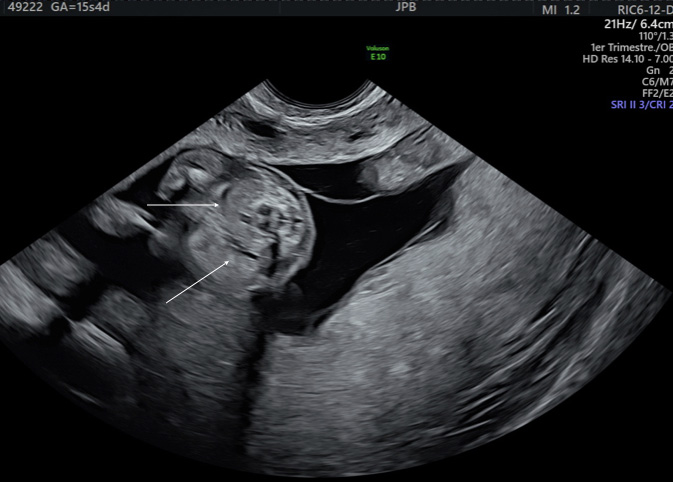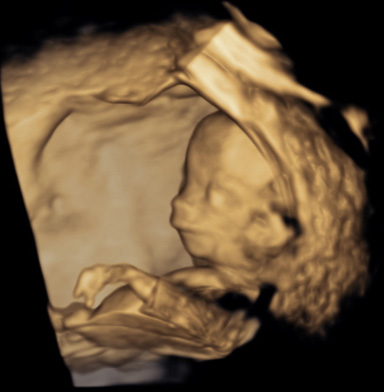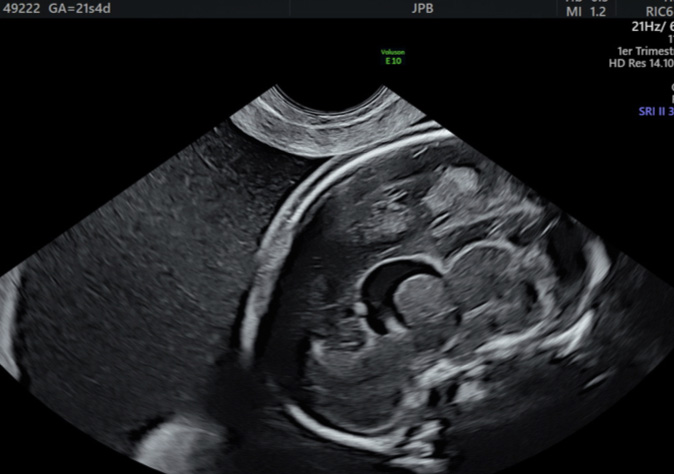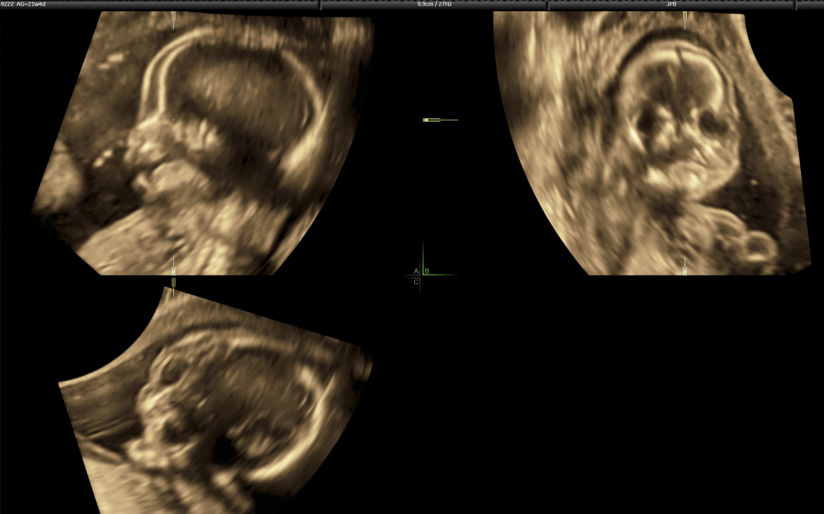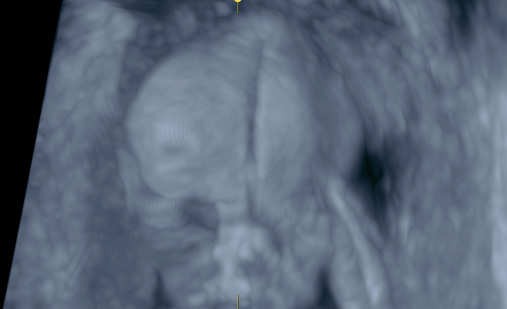From genotype to phenotype
Prenatal diagnosis of Baraitser-Winter cerebrofrontofacial syndrome
INTRODUCTION
Increased nuchal translucency above the 95th centile which is not resolving by 16 weeks and changes into increased nuchal thickness is a significant entry into syndromology.
Baraitser - Winter Cerebrofrontofacial Syndrome (BWCFF) is a rare syndrome characterized postnatally by facial dysmorphism and mental retardation of varying grades. The clinical phenotype of BWCFF indicates variable phenotypic expression involving various congenital malformations such as cardiac, renal and musculoskeletal abnormalities. The prenatal presentation of BWCFF is rarely described, making prenatal diagnosis challenging.
CASE REPORT
A 29-year old woman with a non consanguinous first pregnancy was referred at 15 weeks and 4 days for non-resolving nuchal translucency (9,5 mm for CRL: 59,1mm at 12 weeks’).
Chorion villus sampling was performed for Array-CGH which was found to be normal. Exome sequencing in trio was requested.
Ultrasound examination showed significant nuchal edema with subcutaneous septations, a strawberry shaped head (Figure1), horseshoe kidney (Figure 2) and absence of generalized edema. Biometrics and early-echocardiography were normal. 3D reconstruction is suggestive of retrognatia (Figure 3)
Exome sequencing in trio yielding a de novo heterozygous anomaly of the ACTB gene on chromosome 7: 5568086 c.628>T p.(Arg210Cyst).
She was counselled on the prognosis of Baraitser-Winter syndrome (BWS). The woman was decided upon the course of her pregnancy at this stage.
By that time, she was 21+4 weeks’, and the ultrasound features included: direct and indirect signs of agenesis of the corpus callosum, vermian agenesis or severe hypoplasia and lissencephaly (Figure 4), frontal edema, retrognatia, hyperthelorism and likely posterior cleft palate (Figure 5). The metopic suture appeared restricted on 3D reconstruction (Figure 6)
Owing to the severity of the brain malformations, the patient opted for termination of pregnancy but denied pathological examination which would not have added to her counselling.
DISCUSSION
Baraitser-Winter cerebrofrontal syndrome (BWCFF) is a combination of malformations caused by missense mutations in the cytoplasmic beta- and gamma-actin genes ACTB and ACTG1.
Some of these malformations are amenable to prenatal ultrasound including: facial dysmorphy (hypertelorism with ptosis, broad bulbous nose, ridged metopic suture, arched eyebrows), ocular coloboma, pachygyria and/or band heterotopias. Postnatal evolution includes coarsening of the face, progressive joint stiffening, and intellectual deficit of variable severity, often with severe epilepsy.
Orphanet has gathered around 30 pediatric cases of Baraitser-Winter syndrome (BWCFF)(1). It is recorded as OMIM 243310 614583 and its prevalence is of less than 1 in a million births
Prenatal diagnosis of BWS has been reported with the following fetures on prenatal ultrasound in the second trimester of pregnancy: intrauterine growth restriction, increased nuchal fold, bilateral hydronerphosis, rocker bottom foot and clubfoot(2). One case was diagnosed in the first trimester in a fetus showing a large cystic hygroma and omphalocele(3). This case therefore adds to the prenatal semeiology of BWCFF in the second trimester ultrasound examination with horse-shoe kidney, severe brain anomalies including agenesis of the corpus callosum, vermian agenesis or severe hypoplasia and lissencephaly. Fetal dysmorphy is also described in this report.
Although extremely rare, the diagnosis of BWCFF is important to raise since molecular karyotype fails to detect any abnormality and assessment with Next Generation Sequencing is necessary to show the heterozygous mutation in the ACTB gene setting.
CONCLUSION
Although extremely rare, the diagnosis of BWCFF is important to raise since molecular karyotype fails to detect any abnormality and assessment with Next Generation Sequencing is necessary to show the heterozygous mutation in the ACTB gene setting.
Biblography
1. https://www.orpha.net/consor/cgi-bin/OC_Exp.php?lng=EN&Expert=2995.
2. Yates CL. Whole-exome sequencing on deceased fetuses with ultrasound anomalies: expanding our knowledge of genetic disease during fetal development. Genet Med. 00:8.
3. Zhang K, Cox E, Strom S, Xu ZL, Disilvestro A, Usrey K. Prenatal presentation and diagnosis of Baraitser-Winter syndrome using exome sequencing. Am J Med Genet A. sept 2020;182(9):2124‑8.


